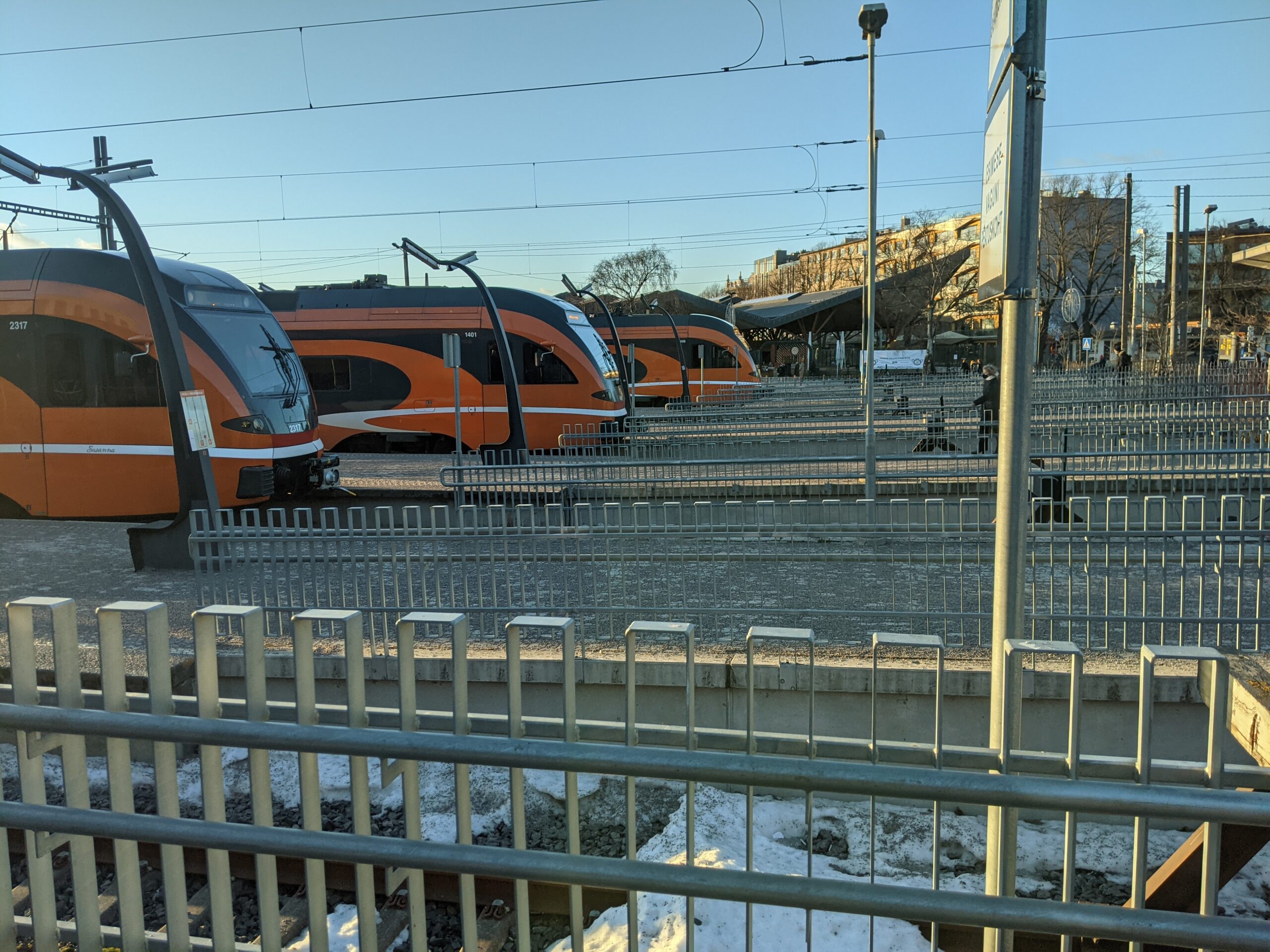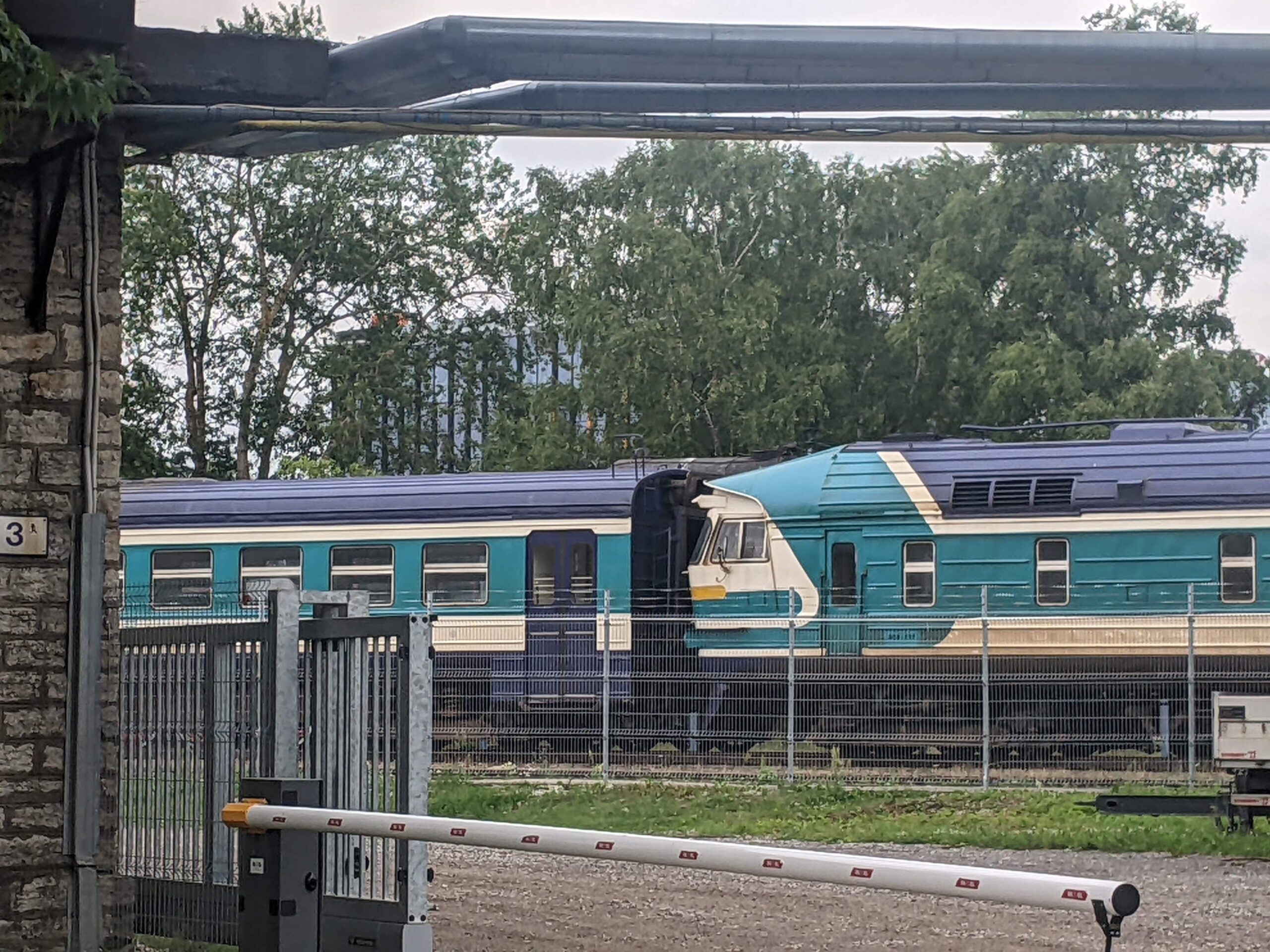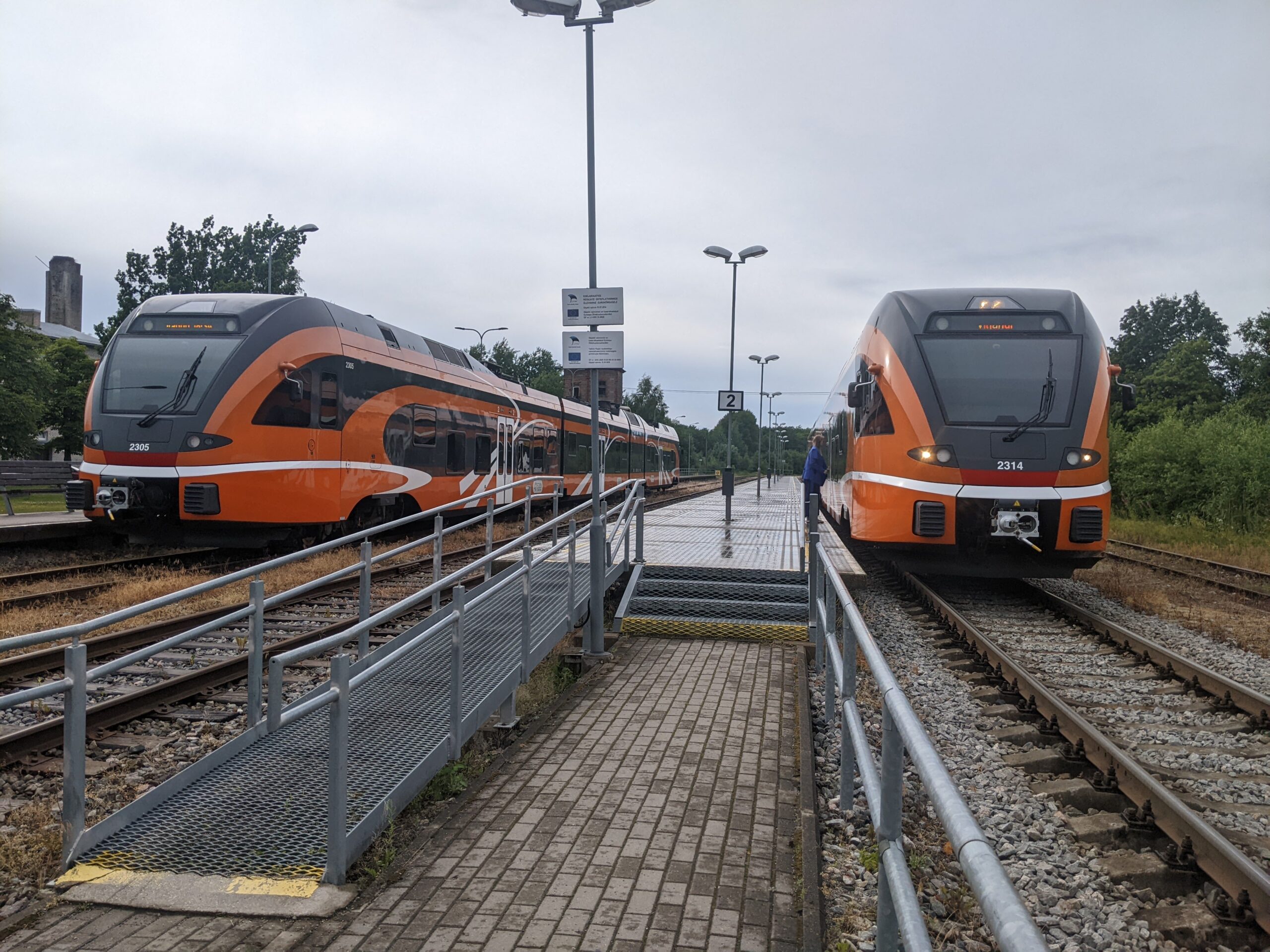Continuing with my series on public transit in Estonia, I have made this post to look into passenger trains in Estonia. As an avid rail enthusiast and frequent passenger on trains, it would be appropriate to provide a look into rail transit in my home country as well, although most of my knowledge is about the UK’s rail network.

Organisation
Passenger railways are mostly nationalised. Infrastructure is owned by AS EVR Infra, a state-owned enterprise, however the line from Tallinn to Viljandi in the southwest is privately-owned under Edelaraudtee. Until 2014, Edelaraudtee was also the operator of long-distance passenger trains with their fleet of Latvian-built diesel trains, and Elektriraudtee, also state-owned, was the operator of regional services around Tallinn with their fleet of Latvian-built electric trains. However, on January 1st of that year, Elektriraudtee took over all operations as new Swiss-built electric and diesel trains entered service across the network and was since rebranded to Elron.

The final Latvian power cars in Estonia. These had been out of service for years and have now been sold to Latvia.
Network
The network operates with Tallinn as its hub, with 3 main lines extending to the west, southwest, and east. The western line is fully electrified with 3 kV DC overhead lines and sees mostly regional and suburban traffic. The line has seen a lot of upgrades over the past few years and is now mostly double-tracked, and while currently all services stop at all stations enroute, express trains between Tallinn and the town of Keila are to be introduced. Currently the line sees about 3 trains per hour, although most don’t travel the full length of the line.
The eastern main line runs to St. Petersburg, but passenger services terminate at the border in Narva. A branch south from Tapa runs to Tartu, where it once again splits with branches to the Latvian border at Valga and the Russian border once again at Koidula. Overhead lines run as far as Aegviidu, where electric trains terminate that provide an all-stations service on the route. Most of the traffic on this line comes from intercity services, between Tallinn and Tartu, Jõgeva, Tapa and Narva. Services between Tartu and Tallinn see heavy demand, and often passengers have to stand for at least a part of the 2 hour journey.
Electrification is to be extended from Aegviidu to Tartu, which will also see new trains rolled out to improve capacity and frequency. Unlike the existing electrification, this extension will use 25 kV 50 Hz AC, which is the standard in most of Europe, but is incompatible with the current electric train fleet. In addition to electrification, the tracks have already been straightened to allow for increased speed limits and sections are being double-tracked to improve capacity. Currently the service to Tartu runs approximately once every hour, although it’s inconsistent and generally not at the same time past the hour each time. Service at late nights is also limited, the last train from Tartu to Tallinn leaves at 20:08.

Two diesel trains at Rapla. The unit on the left had just arrived from Tallinn and would return there, the train on the right continued south to Viljandi.
Fleet
Since 2014, all services are operated using Stadler FLIRT diesel- and electric multiple units. Stadler has sold trains from this family all across Europe, and the Estonian variant is similar to the one that roams the suburban network around Helsinki. However, Estonia was the first country where Stadler sold diesel-powered trains. While the trains are more faster, quieter, more accessible and more reliable than the old Latvian trains, they have not been without problems. Most notably, the trains have less seating than their predecessors, with more standing capacity instead. This became apparent immediately when the trains were first introduced, and mentions of it can be found even on the older posts of this very same blog. However, it has gained more attention as ridership has grown, and new trains are to be introduced from 2024.

Standard class interior. Note the 4th window before the high floor: a feature unique to the longer cars of electric trains.
Stations
The station in Tallinn was built in the 50s, and as was the norm at the time, it looks extremely ugly and uninviting. Fortunately, one does not need to enter the station building to access the trains, as they are all unsheltered and out in the open air, accessible from both sides of the tracks. LCD screens with departure and arrival times have been fitted in recent years and the platforms have been renumbered to follow a logical sequence. The station does have some useful facilities though, like a Selver grocery store, Burger King, R-kiosk and a ticket office.

Tartu station. The temporary platform on the left has since been removed.
All other stations are of a generally minimalist design. Platforms have been rebuilt to standard height to allow for level boarding and feature printed timetables. While some old station buildings remain open to the public, most no longer are. All platforms are now accessible by ramps on all stations.
Tickets
Tickets for all trains can be bought online at elron.ee, from the conductor on board the train, or using Elron’s stored value ticket card (or a combination of the three!).
Online ticket sales open 7 days in advance and close one hour before the trains departure from its origin. Tickets for standard class do not provide a seat reservation nor is it possible at all: there are effectively and unlimited number of tickets available. Prices for tickets depend on distance travelled, however some express trains charge a few additional euros due to high demand on these services. First class tickets include a compulsory seat reservation, and when all seats have been booked, no more first class tickets will be sold. Tickets can either be delivered via e-mail or to Elron’s ticket card.

On board ticket machine. This will only accept credit on ticket cards
If a passenger hasn’t bought their ticket in advance, they may buy a ticket from the conductor, however this will be slightly more expensive. Cash and payment cards are accepted onboard.
Passenger experience
This is an aspect of train travel that has seen improvements the most over the years, in my opinion. I’ll take a look at a journey here from Tallinn to Tartu from end to end. This is a route that I frequent, often 2x/month.
My journey on train 214 begins at the main station in Tallinn, where I had arrived about 20 minutes before its departure at 16:46. I had arrived at the station on a tram, so I first went to the departure boards outside the new waiting room to see which track my train departs from. The LCD screen reports track 3: the longest in the station. Most eastbound trains use tracks 1-3 on the south side of the station, with a couple using track 4. The 4-car diesel train was already at the station, so I boarded through the first door and went to look for a seat.

Tallinn station. Construction around the tram stop.
After 2 stops in Tallinn we speed up to 120 km/h. We share tracks with electric trains as far as Aegviidu, so we skip most of stops until there. Automatic pre-recorded announcements are made for all stops on the way and more details can be found on LCD screens in the vestibules. After Aegviidu, we stop at all stations to Tartu. This is also where on-board WiFi is the least reliable: I often switch between my own 4G internet and the free WiFi, since they use different providers. Another aspect where the train falls short is seat comfort. While it is a high back seat with a decent amount of padding, it’s quite upright, so it’s not very comfortable for sitting down for 2 hours or sleeping.
 Between Tapa and Jõgeva passengers thin out, but at Jõgeva the train fills up again for the journey to Tartu. As we pass the first level crossing in Tartu I begin to pack up my things and prepare to exit the train. A final announcement is played moments before our arrival, thanking us for choosing to travel by train. We pull into the newly-rebuilt platform 2 in Tartu and make our way down the ramp into the underpass to the main station building. I exit through the side door from the underpass, which leads to a staircase up to street level, bypassing the station building proper.
Between Tapa and Jõgeva passengers thin out, but at Jõgeva the train fills up again for the journey to Tartu. As we pass the first level crossing in Tartu I begin to pack up my things and prepare to exit the train. A final announcement is played moments before our arrival, thanking us for choosing to travel by train. We pull into the newly-rebuilt platform 2 in Tartu and make our way down the ramp into the underpass to the main station building. I exit through the side door from the underpass, which leads to a staircase up to street level, bypassing the station building proper.
Passenger rail in Estonia has improved significantly over the last decade and with new trains on order and infrastructure upgrades on the way it will get even better. A high-capacity rail backbone is crucial to a functional transit system and local governments should take note here how incremental upgrades can lead to a major uplift in passenger experience.